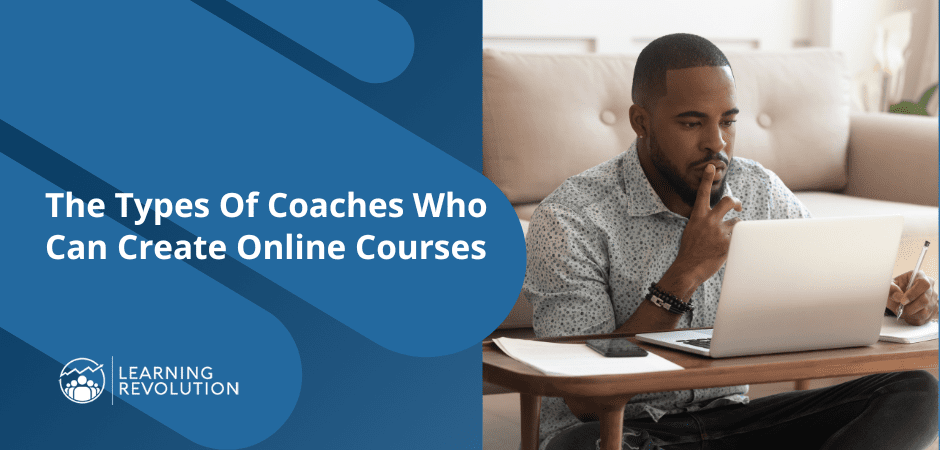
Coaching is built on offering effective advice and guidance based on your own knowledge and expertise. However, there’s often more needed for a truly sustainable and thriving coaching business.
Building a learning community around your coaching has an impressively wide array of benefits. You can more clearly define and differentiate your offerings, make it easier to develop additional products and services, and much more. In simple terms, your coaching community can guide and support your business.
Understanding how to build and nurture a coaching community is crucial for success. That’s true whether you’re an experienced coach or just starting out.
Keep reading to explore what a learning community is and how to build one to complement and support your coaching business and other educational offerings.
What is a Learning Community? Why is it Important?
Let’s start with a practical and very brief definition of a learning community.
As an online coach, a learning community is an effective method for building stronger connections with your clients. It helps you keep your users engaged with you, and with each other.
And a true learning community is much more than a transactional relationship. There’s an emotional component and a sense of fellowship. Members of the community will share common goals and interests related to the topic that you’re coaching on. Successful communities will also include people with common values and attitudes.
The Meaning, Intent & Value of a Coaching Community
In a larger sense, a community is what brings people together. With a common interest in your coaching (whatever the specific topic may be), the basic foundation is already in place.
Your clients all have a shared interest in your offerings. They may have somewhat different motivations or specific end goals related to your coaching. However, they’re working with you to achieve similar results in the big picture. That means they have a built-in reason to interact with you and with each other.
As a coach, you either already have an active client base or are intent on building one. Either way, a group of clients who can benefit from your coaching strategies is at the core of your business.
Ultimately, that helps your coaching business and supports your clients. An active coaching community is a win-win proposition for everyone involved. It means more opportunities to collect testimonials, keep clients satisfied, and promote and share any new offerings.

What Makes a Coaching and Learning Community Different From Marketing, Sales & Outreach?
A coaching community goes beyond your coaching platform of choice and the support and guidance you offer to clients.
There’s definitely a marketing and sales intent behind coaching and learning communities. Building a group of engaged and interested clients makes it easier to generate sales. With an engaged audience, it’s easier to promote new offerings, encourage word-of-mouth referrals, and more.
However, that marketing and sales intent is only part of the reason behind building a coaching or learning community. The intent is also for the members to learn, connect with, and support each other, as Thinkific explains. You’ll participate in those processes, too.
Many marketing, sales, and outreach efforts are essentially a one-way street. An email list, for example, is great for sharing updates about your coaching services. However, there’s simply no community element to it. You can and likely do have 1-to-1 conversations with individual clients, but that’s not a community.
The same is true for many other types of marketing. Regardless of the specifics, marketing usually means you’re broadcasting a message from your perspective. That’s important for any business and plays a valuable role in driving sales.
The interactivity of a community is what makes it more than marketing. A community goes beyond only being an effort to find new prospects or sell a new offering to existing clients. Instead, it’s a valuable, useful, and sometimes even fun way for clients to interact with each other, learn, and grow.
What Does a Thriving Coaching Community Look Like?
Coaching and e-learning are distinct ventures. However, successful online communities for edupreneurs of all types share important common attributes. These include:
- A sense of exclusivity. These communities don’t allow anyone and everyone to take part. The vetting process is simply a client’s interest in receiving coaching from you. However, this kind of gatekeeping helps keep the community on track, focused, and valuable to its members.
- Active discussion, learning, and problem-solving. A learning community empowers your clients to work with and support each other. You can and should participate, of course, but the weight isn’t all on your shoulders. A key part of the value of a community is user-driven discussions and Q&A interactions.
- Opportunities for continuous improvement. A community expands on your coaching by giving members opportunities to talk about and build on it. They can discuss real-world scenarios and how your coaching applies to it, just as one example.
- Informed and effective moderation. As the expert building a community and leading it, you can and should control the conversation — to an extent. That’s just as much about continuing to demonstrate your value and expertise as it is keeping discussions on track.
- Access to exclusive content. Giving community members access to something special and useful encourages them to not just join, but continue to participate.
There certainly are exceptions, but the community platform you build as a coach generally shouldn’t be an added expense. Instead, it should be bundled into the cost of your coaching.
Limiting access too much can stifle the growth of what could otherwise be a thriving community. And it can still drive revenue as clients stay subscribed to your coaching cycle to access the community. Let them see the benefits your learning community provides. If they find it valuable, there’s a good chance they’ll continue to work with you.
Building a Community Around Your Coaching
The goal of building a community around your instructional coaching strategies is admirable. However, it’s not enough to develop an active and enriching community that fulfills all of its objectives.
How can you build a community that your clients will want to participate in and keep coming back to?

Have a Clear and Specific Focus
You’re in complete control of your coaching community. You can choose the specific community platform that best suits your needs, select foundational topics of discussion, and much more.
Finding a focus for your community is crucial, and ultimately a truly individual exercise. You know the specifics of your coaching intent, desired outcomes, and target audience better than anyone else.
What do you bring to the table? Why do your clients choose to work with you? What specific skills, knowledge, and outcomes are they looking to gain?
You should be able to easily answer these questions, which means you can start building your community’s focus. Perhaps it’s almost everything to do with the topics your coaching covers. Or, perhaps it will center more on emerging trends and tactics in a relevant field than anything else.
Be sure to consider your own needs as well. Do you want to gather testimonials and other user-generated content from your community? How can you generate leads and market new coaching strategies or services? Think through what your community can do for you as well.
Provide Opportunities for Social Learning and Engagement
Creating a community means building a place where people with a common interest can interact. A major benefit for community members is accessing a space that supplements and builds on your core coaching business.
Give your members a reason to join, visit, and return to your community. Think about topics specific to your coaching that can spark interest and encourage conversation. Consider building and sharing content that can spur discussion and drive clients to additional coaching services, too. An evergreen webinar is just one example.
Even if some of the topics seem simple or basic to you, that may not be the case for your community. Make sure you consider their needs and perspectives. You’re already an expert in your field, but they’re still working to gain that level of knowledge and skill.
Take a deeper dive into our best practices for community engagement.
Make Your Learning Community Relevant and Desirable
What can your community offer that’s unique to it — that isn’t available from a similar community?
You don’t need to build a full coaching workflow and offer it for free or deliver volumes of custom content. Sharing your informed and experienced perspective can be enough to drive relevancy and desirability.
It can be enough to offer a space for people with a common goal, led by a coach they trust. However, you’ll need to actively participate to make your community unique. Encouraging discussion, sharing your wisdom, and moderating when conversations get off topic create a more attractive community.
Give Community Members Tools to Easily Interact with Each Other
Selecting the right platform for your coaching and learning community is a crucial decision. Each one comes with its own benefits and limitations. Some are better at monetization and analytics, others emphasize ease of use or brand promotion.
The good news is that we maintain a list of the top 10 community platforms currently available. Researching all of your options can be overwhelming. With this list — and a foundational grasp of what you want your community to offer — you can streamline the process.
The Benefits of an Active Learning Community
The win-win nature of building a coaching and learning community is very important to keep in mind.
As we review the following benefits of an active learning community for your coaching business, remember that you need to keep delivering value to your members. It’s the only way to maintain an active community and reap the benefits from it.

Distinguishing and Differentiating Your Coaching
There are plenty of coaches available on an incredibly wide variety of topics. How can you set your own online coaching efforts ahead of the rest of the pack?
Building a coaching community can help you stand out.
An engaged base of active participants helps signal the value of your coaching to potential clients. Your community can also be a source of testimonials that lead to more effective marketing. Word of mouth from happy and engaged members can fuel your sales funnel without you having to take the lead.
Tapping Into and Serving the Lifelong Needs of Your Clients
One-on-one and group coaching can yield valuable insights into what’s important to your clients. However, the focus in those sessions is on coaching, not anticipating new or changing needs.
A coaching community can make the needs, wants, and opinions of clients easier to manage and review. You can review member discussions and even ask them directly what they want in terms of new coaching services.
Take the time to gather this information and identify trends and opportunities. It can tell you what your clients are looking for. That means more opportunities for your business and satisfied clients in the long term.
Offering Additional Value to Clients Through Networking and Discussion
People who want to learn and grow will seek out opportunities like coaching to develop their skills and capacities. Whether one-on-one sessions or small group coaching, support and guidance from a skilled expert can be especially helpful.
As powerful as coaching is, it’s only one way to grow and develop a particular skill or area of focus. Conversations with like-minded people can help, too. Whether it’s discussing broad concepts or specific questions, a community can supplement and strengthen your own coaching.
It’s important to keep networking in mind in this context, too. While not all coaching is business-focused, networking is still valuable whether in a personal or professional context. People who share an interest in the areas you coach may become friends, business partners, and more.
Getting Your Online Coaching Community Started
When it’s built with a clear intent and a focus on supporting both your coaching business and your clients, a community is incredibly powerful. Your community can help you guide your coaching business, find and secure new leads, and much more. At the same time, your community members will have access to a community dedicated to a topic they care about.
If you want to get your online community into motion, learn about the best online coaching platforms to get started.
Table of Contents



